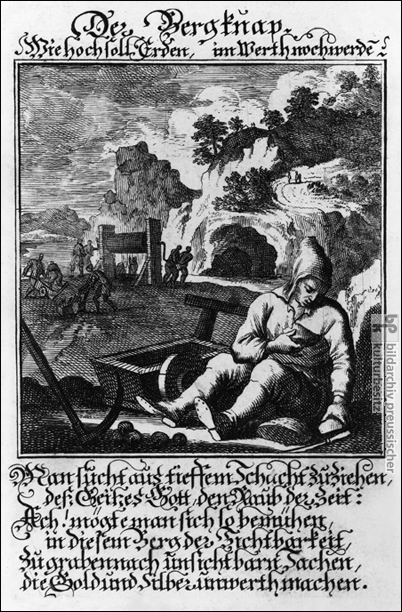













INTRODUCTION | DOCUMENTS | IMAGES | MAPS | EDITOR
|
Improvements in technology, as well as demand from growing populations and warring states, led to a boom in mining in the sixteenth and seventeenth centuries. By the eighteenth century, mining had become a state monopoly and a central component of mercantilist state economies. This copperplate engraving by Johann Christoph Weigel (after 1654-1726) was published in his Abbildung der Gemein-Nützlichen Haupt-Stände (Regensburg, 1698), which included verses by Abraham a Sancta Clara (1644-1709), an Augustinian monk who became famous for his earthy, humor-filled sermons and his prolific writings and treatises on moral and religious themes. The verses underneath the engraving explore the act of mining in both a literal and a figurative sense, imploring readers to dig for “invisible things that make gold and silver worthless.” The Miner
© Bildarchiv Preußischer Kulturbesitz |
 print version
print version return to image list
return to image list previous image
previous image
